6 Fall Lawn Care Tasks To Prioritize Before Winter – Plus When To Make The Last Cut
Use our guide to prepare your lawn for its winter slumber, and it will awaken in spring with lush, verdant grass you can be proud of.
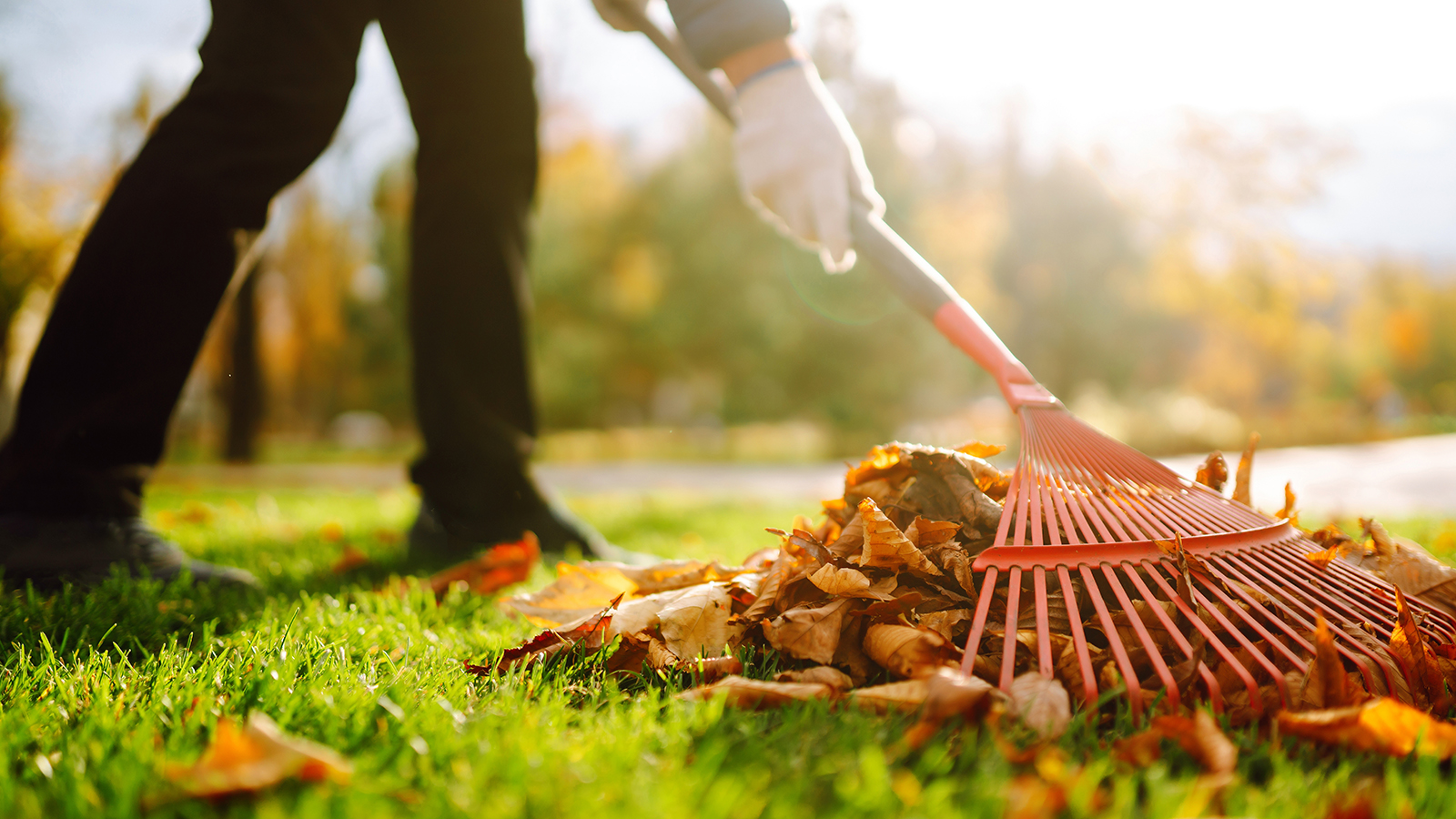

Fall lawn care is all about preparing for lush turf come spring. What you do now, before winter arrives, determines the health and appearance of your grass next season. These vital tasks will protect your grass ahead of colder temperatures and snow. They will help promote energy storage, strengthen roots, boost disease resistance, and more.
If you want to see a healthy, green lawn next growing season, then don't neglect these essential fall lawn care chores. Starting now will avoid placing too much stress on your grass before the frost sets in.
1. Manage Leaves
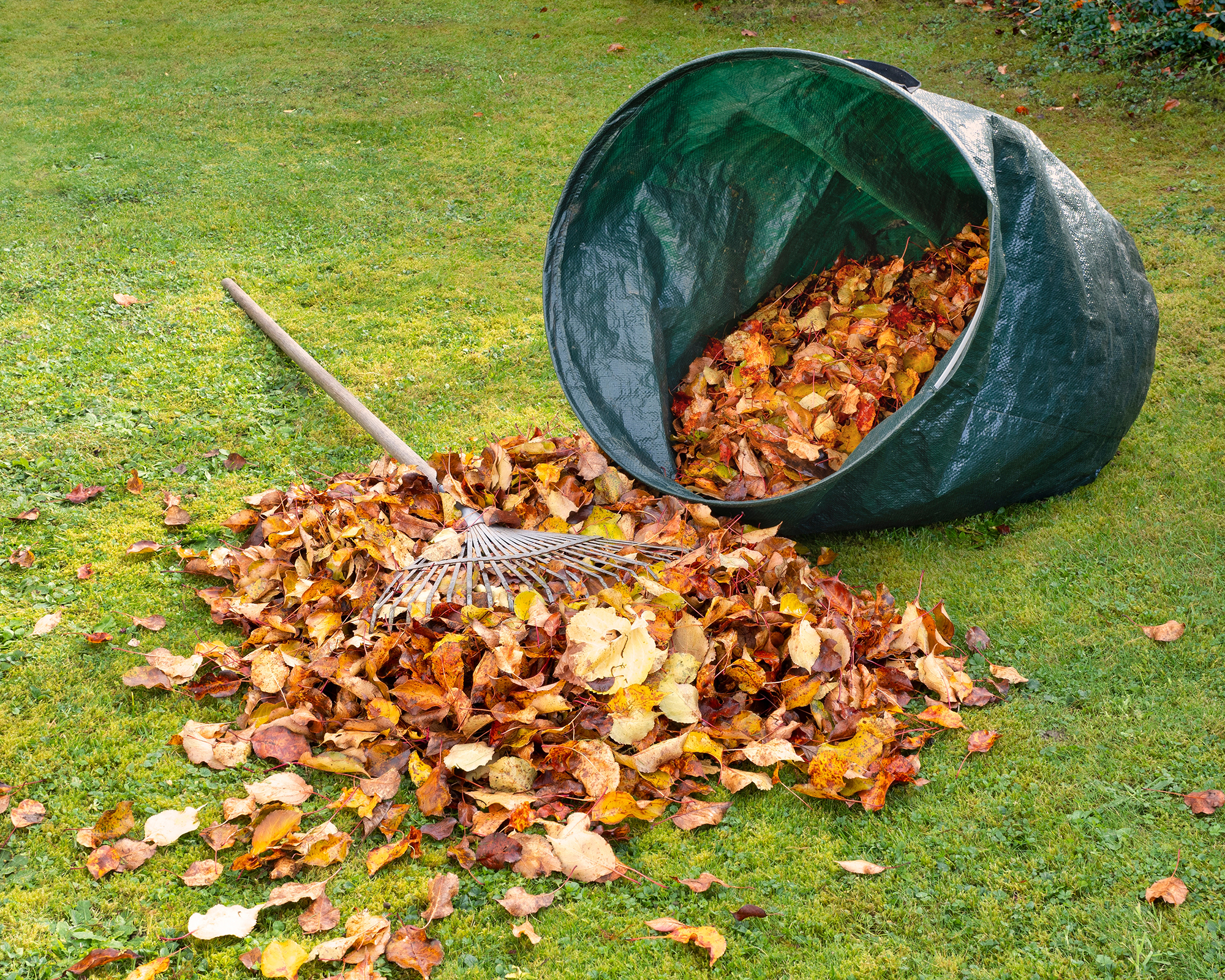
Fall colors are beautiful, but once the leaves drop, they can harm your turf grass. Leaves left on the lawn block essential sunlight, which grass needs to trap and store energy for later growth. Fallen leaves also trap moisture and block airflow, which promotes disease and essentially smothers the grass.
Avoid letting a substantial layer of leaves sit on the grass for longer than a few days. Rake them up and dispose of leaves appropriately. The best way to rake leaves is to use an ergonomic leaf rake and keep a straight back. Use your arms for movement and bend one knee with the other slightly in front.
What to do with fall leaves depends on how many you have. Mulching with leaves is a good option if you don’t have too many. Run over leaves with the lawn mower and leave them in place. This saves time and effort compared to raking and bagging. Mulching also adds nutrients to the soil, as earthworms and microorganisms can more quickly break down the smaller pieces of leaves.
If they aren't diseased another option is to compost leaves by adding them to the compost bin, or make leaf mold in bags to use as compost or mulch.
2. Fertilize the Grass
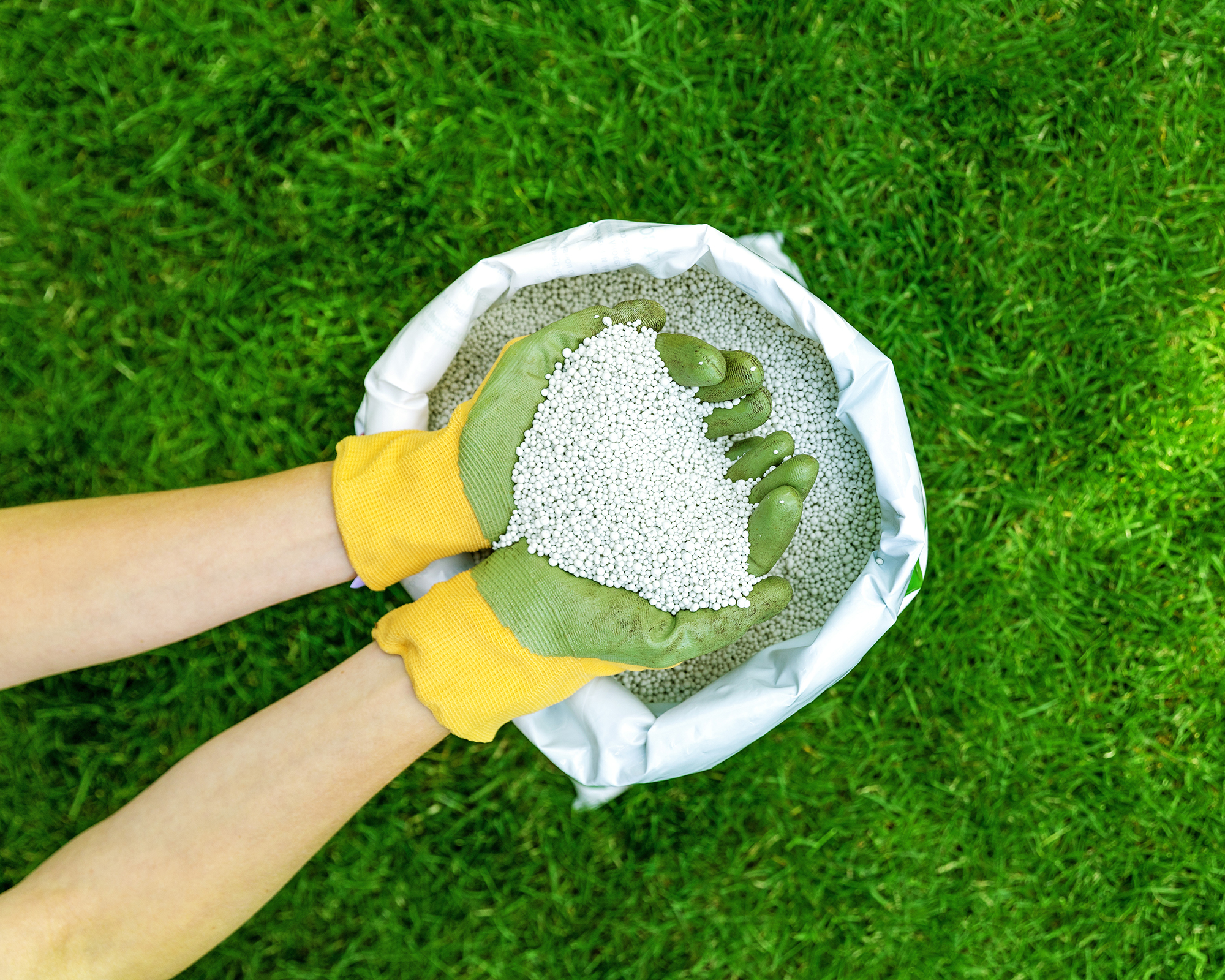
Fall is a great time to fertilize cool-season turf grass. Adding nutrients now helps grass develop strong roots and store extra nutrients it can use in spring. Fall feeding boosts your lawn’s odds of surviving winter in a healthy state and contributes to quicker greening once the weather warms in spring.
Gardening tips, videos, info and more delivered right to your inbox!
Sign up for the Gardening Know How newsletter today and receive a free copy of our e-book "How to Grow Delicious Tomatoes".
To fertilize lawns, use a slow-release, granular product designed for fall grass feeding. Use a broadcast spreader and water the lawn after application.
Timing depends on your location, but mid-October through early November is a good guideline. Check with your local extension office for more location-specific information on the best time to apply fall fertilizer.
3. Aerate the Lawn
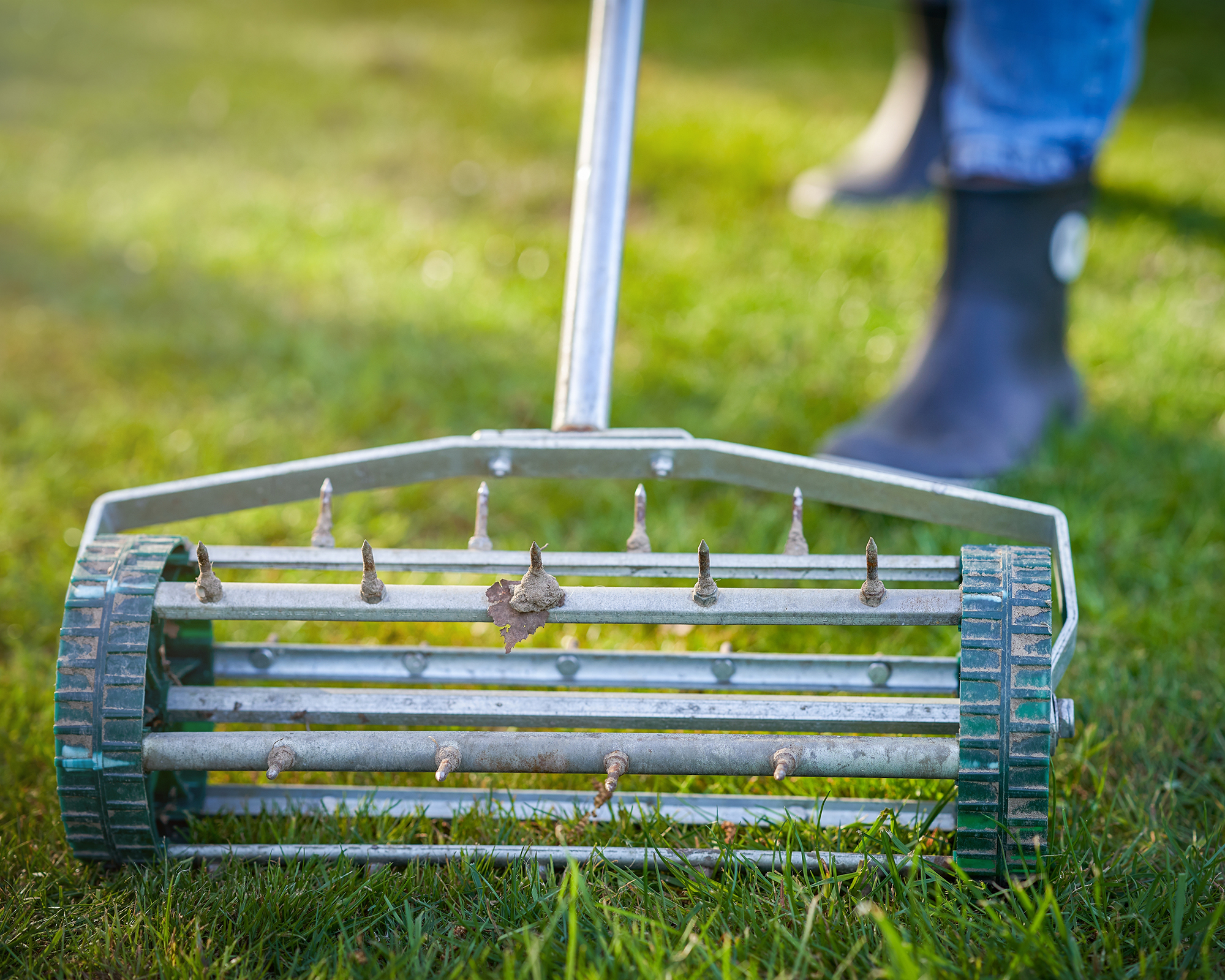
Aerating the lawn is an often overlooked but important task for healthy grass. The process punches holes in the ground, removing little plugs of soil. Aeration prevents soil compaction and excessive lawn thatch, both of which can prevent water and nutrients from getting to the roots of grass. Aeration also improves the flow of oxygen to roots.
Aerate your yard once every couple of years in the fall for the best results. You can rent aerating equipment and do it yourself but consider hiring a professional. They’ll do a better job and save you a lot of time and effort.
4. Overseed to Fill in Bare Patches
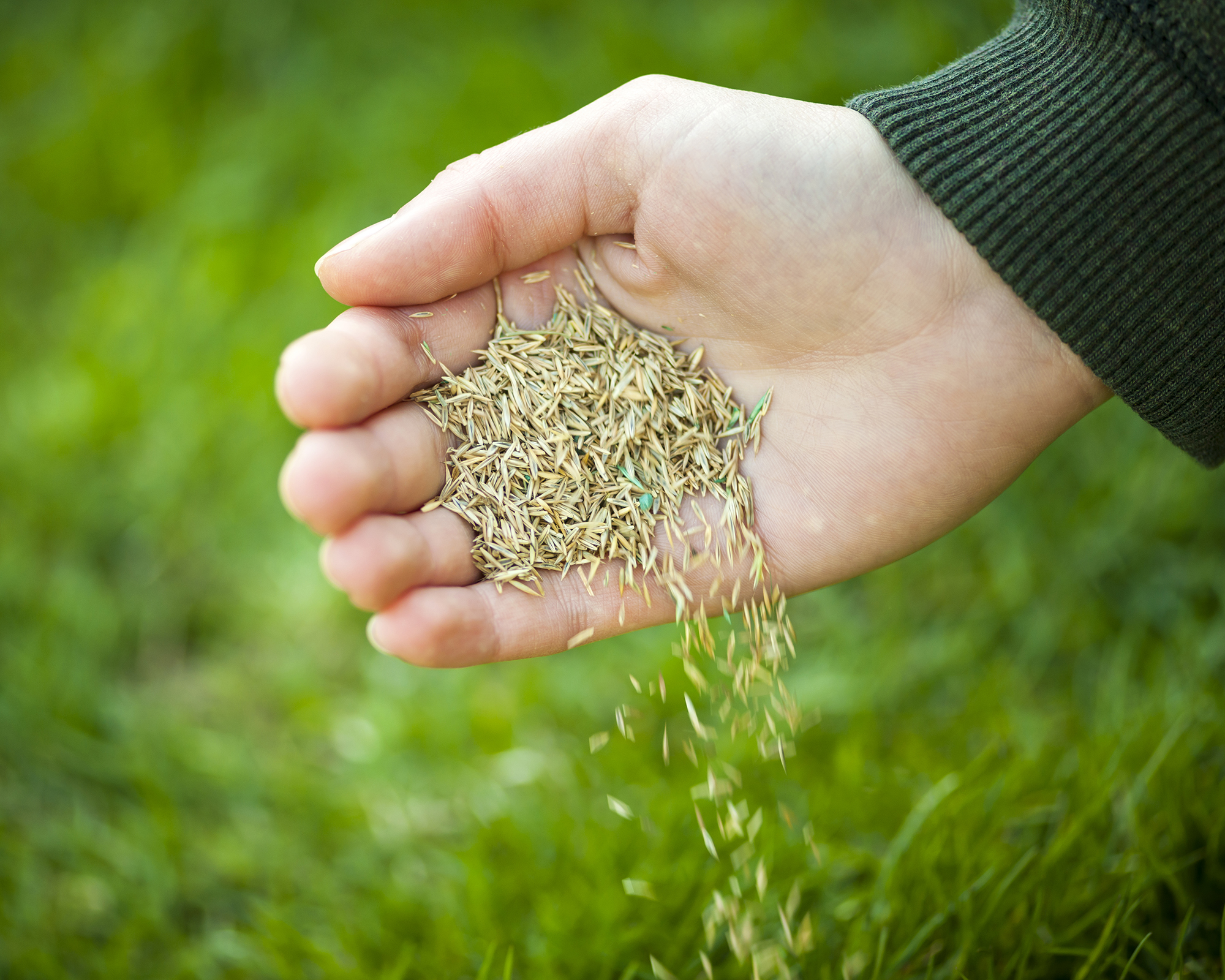
Overseed the lawn in the fall to get more grass in spring. The practice fills in bare and thin spots in the lawn. New grass looks nice next season, but it is also important for minimizing weeds. The best time for this chore is after aerating the lawn. The holes provide an ideal environment for new grass seeds to germinate and take root.
Choose a grass seed that is appropriate for your area and climate and broadcast it evenly over the lawn using a spreader. Cool-season grasses such as fine fescue and Kentucky bluegrass are well suited to northern states, while those in warmer southern states should opt for a warm-season grass, such as Bermuda, centipede, or zoysia
Water regularly to keep the soil moist as the seeds germinate. This takes about three weeks.
5. Control Weeds
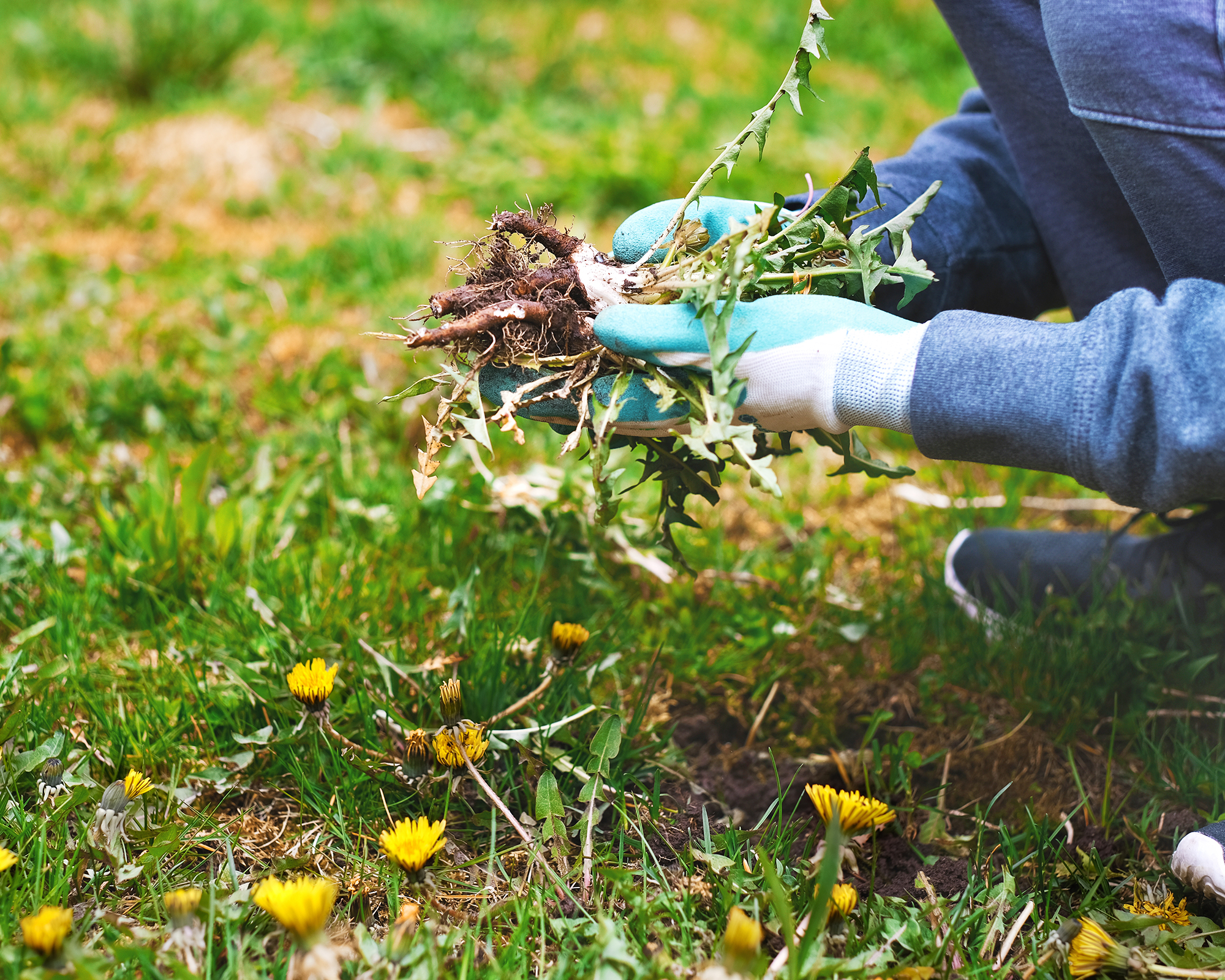
Like your grass, lawn weeds are getting ready to survive winter and thrive in spring by absorbing water, nutrients, and sunlight. Fall is a good time to get them under control and minimize their foothold in spring.
Use a pre-emergent product in early fall to prevent seeds that dropped in summer from emerging now. Later in the fall, you can apply a broadleaf herbicide to manage any weeds that grow despite your efforts.
If you don’t like using chemical control, you can use less product by spot-treating weeds. Another alternative is to hand-pull weeds. Doing it now will reduce the need for spring weeding.
6. Mowing – and Making the Last Cut of the Season
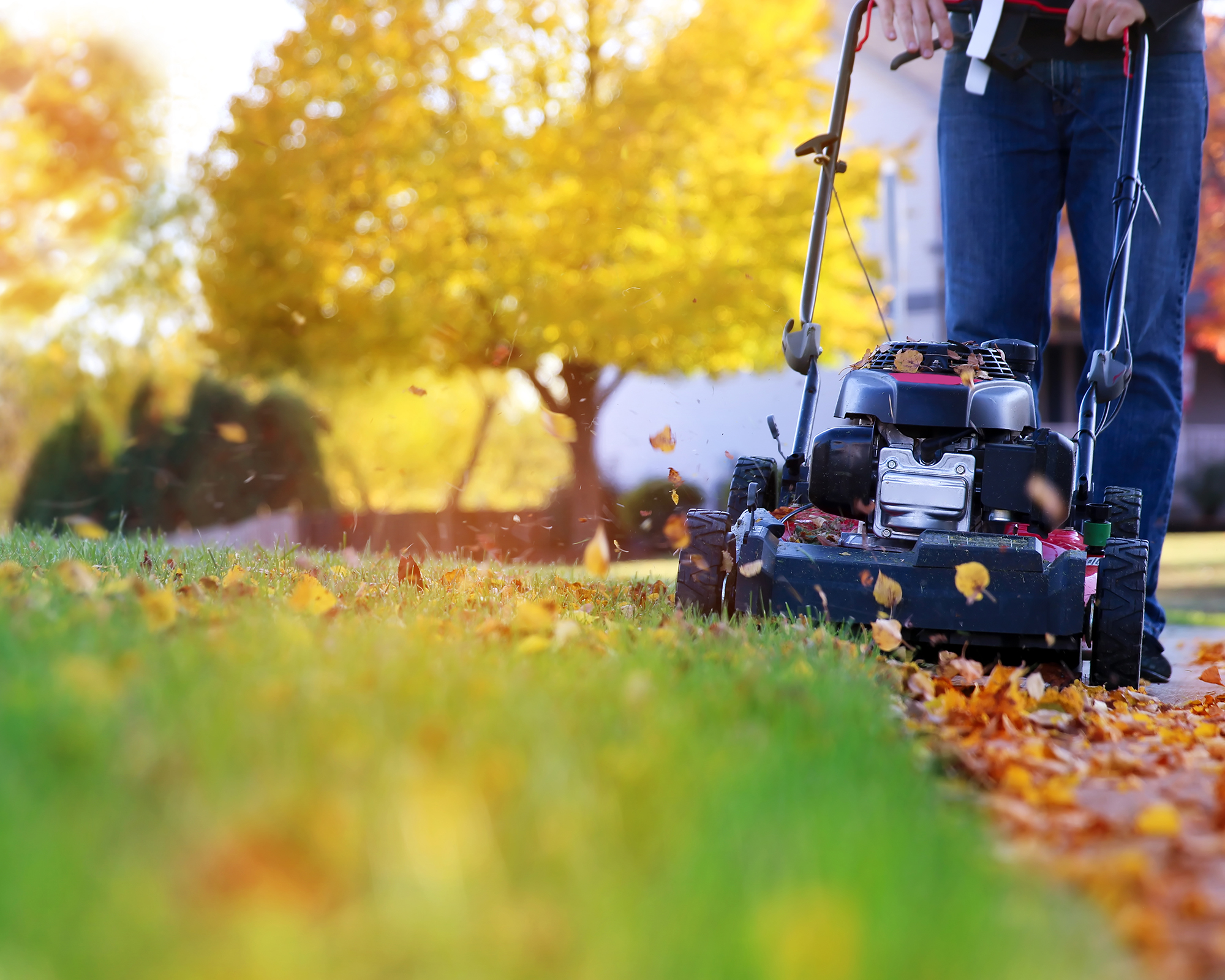
All the extra fall tasks are essential for lawn care, but what about mowing? Should you mow this time of year and when should you make the last cut before winter? The best way to mow lawns in fall is to aim for an ideal grass height of about 2.5 to 3 inches (6 to 8cm).
This is an ideal length for grass because it provides a good amount of surface area to maximize photosynthesis. This allows the grass to keep collecting as much energy as possible before winter. This length also supports healthy roots. Cut it too short, and the roots will also grow shorter, making it more difficult for the grass to survive winter.
You won’t necessarily need to change your mowing frequency in the fall until it’s time for the final cut. Mow as often as you need to maintain a good height on the grass.
The last cut of the season will depend on your USDA hardiness zone. Stop mowing once you see the season’s first hard frost, as the grass will now go dormant. This is usually sometime between mid-October and mid-November.

Mary Ellen Ellis has been gardening for over 20 years. With degrees in Chemistry and Biology, Mary Ellen's specialties are flowers, native plants, and herbs.
-
 Grow ‘Karl Rosenfield’ Peony Plants For The Ultimate Frilly Border Beauties And Cut Flowers
Grow ‘Karl Rosenfield’ Peony Plants For The Ultimate Frilly Border Beauties And Cut FlowersFor frilly double magenta peony petals infused with a heady fragrance, grow ‘Karl Rosenfield’ peony plants. Here’s how to cultivate the ultimate plushy blooms
By Tonya Barnett
-
 10 Common Composting Problems That Can Spoil Your Garden Gold – Plus Easy Fixes
10 Common Composting Problems That Can Spoil Your Garden Gold – Plus Easy FixesLearn how to troubleshoot common composting issues before they ruin your stash – from bad smells and bugs to materials not breaking down as they should.
By Susan Albert